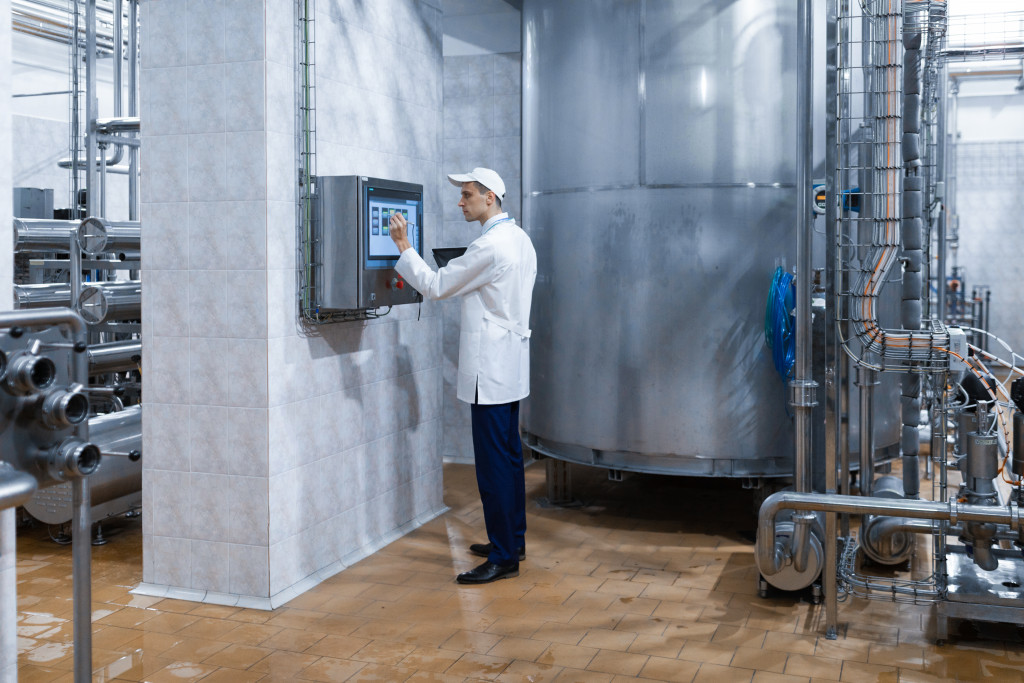The food manufacturing industry has been growing steadily in the U.S., and several factors have contributed to this growth. The worldwide food manufacturing industry is now worth nine trillion dollars. From increased demand for packaged foods to advances in technology, it’s easy to see why this sector is experiencing such success. Here’s a closer look at why food manufacturing has become so popular in the US.
Demand for Packaged Foods
One of the main drivers of growth in the food manufacturing sector is increased demand for pre-packaged and convenience foods. Consumers are looking for options that require minimal preparation and offer maximum convenience; as such, many people are turning to packaged foods as easy solutions for their meals and snacks. This trend has been spurred by busy lifestyles, which leave little time for preparing meals from scratch. As a result, food manufacturers have had to adapt their offerings to meet these demands, resulting in increased production output and revenues for these businesses.
Advances In Technology
Another factor contributing to the growth of food manufacturing is technological advances that have improved production efficiency and allowed companies to create more innovative products with better quality control measures. For instance, automation technologies have enabled companies to streamline their processes, leading to faster production times and higher levels of accuracy when it comes to product quality control testing. New technologies such as 3D printing have allowed manufacturers to produce ingredients with greater precision, leading to more consistent textures and flavors across different batches of products.
Consumers Becoming More Health Conscious
Finally, consumer trends are also playing a role in the growth of food manufacturing. Many consumers today are becoming increasingly health-conscious and seeking out healthy options when it comes to meals and snacks. In response, food manufacturers are creating products with fewer artificial ingredients or preservatives while using natural ingredients; this has increased demand for these healthier alternatives and greater production output from manufacturers.

Building a Food Manufacturing Plant
It’s clear that numerous factors are driving food manufacturing growth in the U.S., and that’s why you should join this field as an entrepreneur. You can start by building your food manufacturing plant. Here are the essentials for doing that.
Know Your Market & Regulations
Before you plan out anything else, you must understand the market and regulations associated with creating a food manufacturing plant. Understand your target audience and what products they would be interested in buying. This will help you decide where to place your factory and what ingredients to use. It’s also important to research which health, safety, and environmental laws apply for your business to comply with local regulations.
Some regulations you need to know include the FDA Food Safety Modernization Act, the Good Manufacturing Practices (GMPs), and Hazard Analysis Critical Control Point (HACCP) regulations.
Secure Funding
After researching relevant skills and markets for your business, you will need to secure funding for building the factory or renovating an existing one if applicable. You may need to take out a loan or secure investors depending on how much money you need for this venture! Additionally, make sure that you check into any grants or tax incentives available to keep costs down while building up capital for future investments in machinery or personnel training programs – this can help kickstart your business!
Construction
After, you need to seek suitable welders for your plant. You have to ensure that they are expert food-grade welders and use the latest welding and cutting technologies to construct food-grade equipment. Additionally, you need to obtain the proper permits and licenses for your plant. This includes any necessary registrations with local, state, or federal regulatory bodies and safety protocols that must be met before production can begin.
Establish Quality Control Procedures & Regulations
When running a food manufacturing plant, quality control is essential for ensuring that only safe products make it out of your doors and into customers’ hands. Therefore, it’s vital to establish procedures for testing incoming ingredients and inspecting finished products before they’re shipped out – this way, you can guarantee that only high-quality goods make it through every step of production without fail. Additionally, familiarize yourself with local health regulations related to food safety to stay compliant with all laws governing food production in your area.
Food manufacturing is a growing industry in the U.S., and it is easy to see why with all of the factors contributing to its success. There are numerous opportunities for entrepreneurs to get involved, from building food manufacturing plants to establishing quality control procedures. So if you’re looking for a new venture, this may be just the investment you need!
